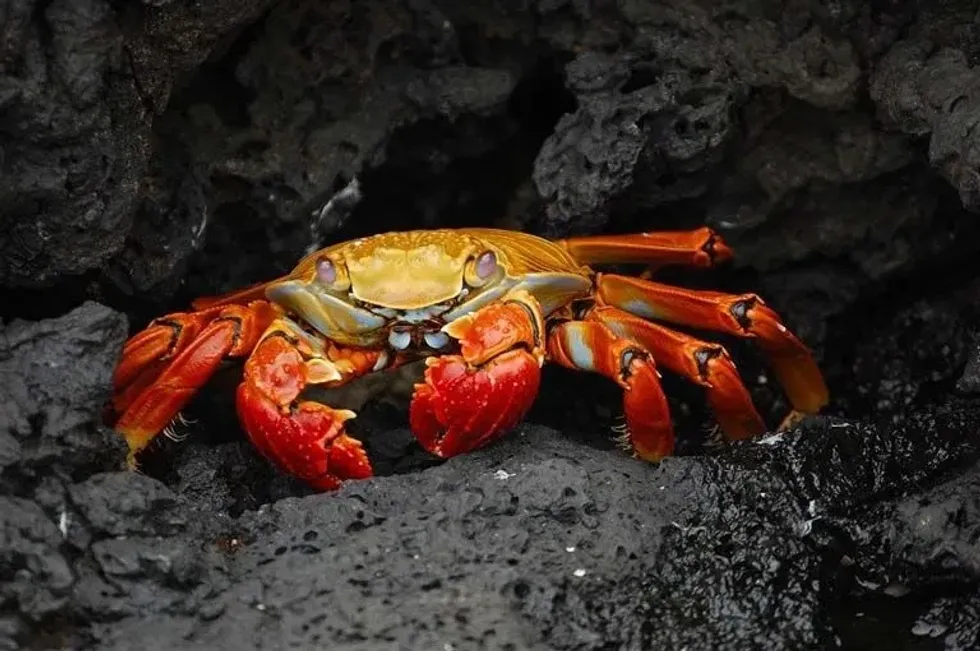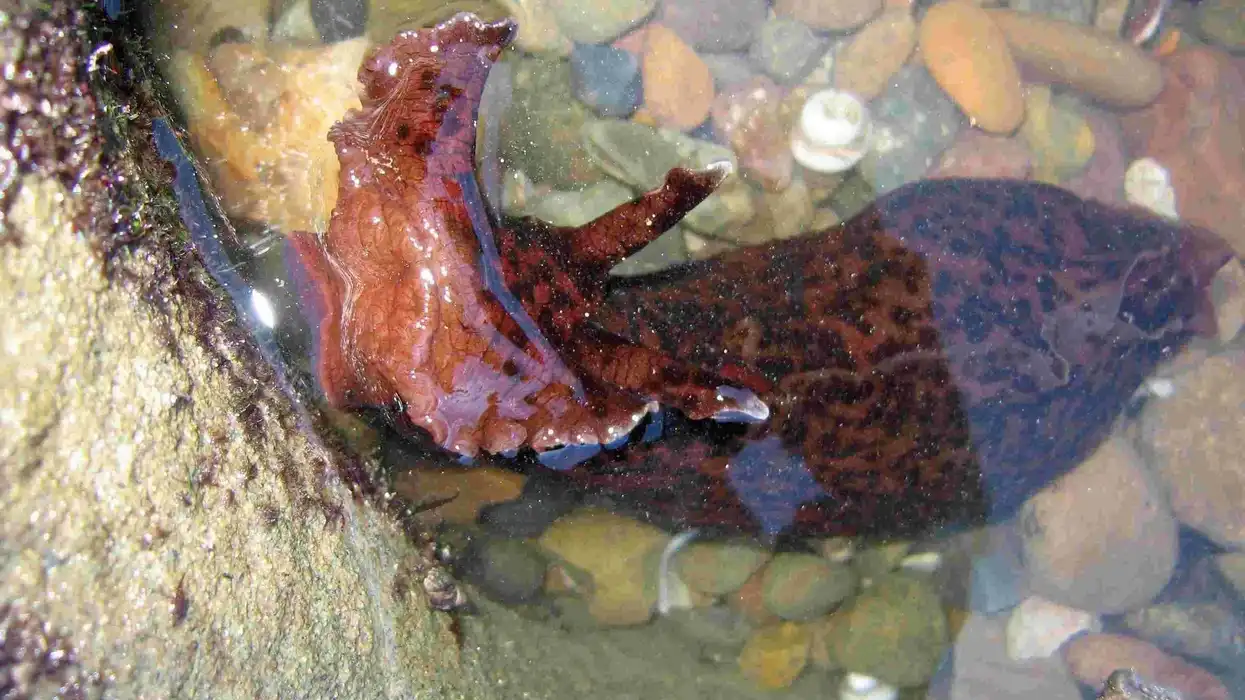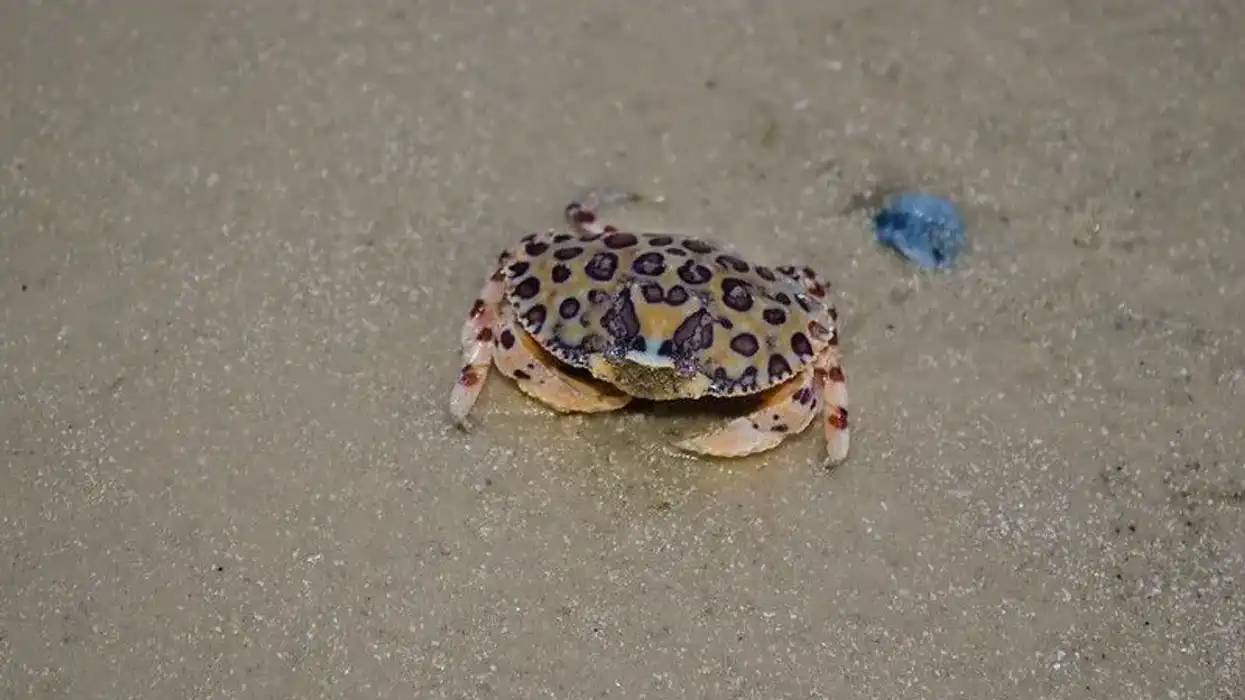With their reddish-orange shell having red spots and baby blue belly, the sally lightfoot crabs are easily recognizable. Their scientific name is Grapsus grapsus. Most of them have dark brown appearances.
Often, they are the highlight of a Galapagos trip, they are also one of the most common animals on the Islands. The sally lightfoot crabs are colorful and fascinating creatures.
But that's not all that is fascinating about them. Their ability to move gracefully among the deep black lava rocks is quite compelling. Galapagos Sally Lightfoot Crab species are primarily found around the Galapagos Islands and can camouflage their appearance to merge with the black lava in the background.
Rumored to be named after Caribbean dancers, the sally lightfoot crabs are a delight to watch because of their flamboyant appeal. After reading these interesting facts about the Galapagos sally lightfoot crab, please feel free to read through these green crabs facts and red rock crab facts as well.
Sally Lightfoot Crab Interesting Facts
What type of animal is a sally lightfoot crab?
The sally lightfoot crab is a tortoise belonging to the class Malacostraca of Phylum Arthropoda, which is an invertebrate with jointed appendages. They are primarily found around the Galapagos Islands and are hence also called Galapagos sally lightfoot crab.
What class of animal does a sally lightfoot crab belong to?
Sally lightfoot crab or Grapsus grapsus, belong to the class Malacostraca. Female Galapagos sally lightfoot crab lays eggs after completion of the gestation period.
How many sally lightfoot crabs are there in the world?
The exact figures of the total number of sally lightfoot crabs across the world are not stated. However, the population of these organisms is quite stable.
Where does a sally lightfoot crab live?
Grapsus or the Galapagos sally lightfoot crab are found on the Pacific Coast along with Mexico, Central America, and South America including the Galapagos Islands. It is also known as sally lightfoot crab Galapagos as it lives in these vast islands.
What is a sally lightfoot crab's habitat?
One of the most common crabs along the western coast of South America and a popular resident of the Galapagos, the Galapagos sally lightfoot crab can be found along the shoreline, shallow water, and in places near the sea. They prefer living by plenty of rocks and in crevices in order to facilitate an easy hide.
Who do sally lightfoot crabs live with?
The sally lightfoot crabs share a symbiotic relationship (mutually beneficial relationship, where both the organisms are equally benefited ) with Marine Iguanas. They are often seen together at Galapagos with sally lightfoot crabs eating parasites and ticks from the skin of iguanas.
How long does a sally lightfoot crab live?
The average lifespan of crab sally lightfoot is about 12 years. They feed on algae, plant matter and dead animals to sustain themselves. They predominantly reside around the rocks in western coasts of South America.
How do they reproduce?
After reaching the age of maturity, Sally lightfoot crabs have a year-round breeding season. The male crabs of this species, however, breed much more frequently than the female counterparts.
Following fertilization, the females carry the eggs on their stomach until they’re ready to hatch. After the given gestation time, the female sally lightfoot then releases the eggs into the water.
During The first phase of life, the young one undergoes several molts, each time adding more segments and appendages to their body. This phase is spent entirely in the ocean.
Eventually, the young one undergoes a metamorphic change and transforms into juveniles. The sally lightfooted crabs undergo molt throughout their life while getting rid of their temporarily hard shell along the way.
What is their conservation status?
Since the population of the sally lightfoot crab is quite stable and thriving, in its native habitat, it can be safely said that these species face no threats of extinction.
Sally Lightfoot Crab Fun facts
What do sally lightfoot crabs look like?
The sally lightfoot crabs are shaped like typical crabs. They possess a shell that grows three to five inches long and they have five pairs of legs.
The non-clawed legs are flat and broad with tipped ends. The adult sally lightfoot crabs are usually of deep red color, pink or yellow.
The legs of these crabs are characterized to provide them agility in jumping from rocks, run in four directions, and the capacity to climb up vertical slopes. The sally lightfoot crab adaptations (such as camouflage) allow it to remain safe from predators.
How cute are they?
The sally lightfoot crab is remarkably fascinating with blends of bright and vibrant color. The crab's agility and tendency to dance among the deep lava rocks make it appear stunning.
How do they communicate?
Like all other crabs, sally lightfoot crabs use the process of 'Stridulation' to communicate with each other. Herein, they rub their legs, specialized ridges on the claws and arms to communicate with each other.
How big is a sally lightfoot crab?
The average length of sally lightfoot crab is about 3-5 in (8-12 cm).
How fast can a sally lightfoot crab run?
The sally lightfoot crab is a very fast and agile organism.
How much does a sally lightfoot Crab weigh?
The weight of sally lightfoot crab is around 0.5 lb.
What are their male and female names of the species?
As the sally lightfoot crab is a crab belonging to the species of Grapsus grapsus, a male sally lightfoot crab is referred to as male sally lightfoot and females as sally lightfoot.
What would you call a baby sally lightfoot crab?
The progeny of sally lightfoot crab is referred to as baby sally lightfoot, a juvenile or progeny.
What do they eat?
The sally lightfoot crab feeds on almost anything they come across including sea turtles, young birds, and other crabs. Additionally, they also survive on dead fish, even bird droppings, broken eggs, and sea lion placenta.
Are they dangerous?
Though sally lightfoot crabs pose no threat to humans, in their natural habitat, these crabs do become aggressive and work as opportunistic predators. Besides that, these crabs are peace-loving organisms who like to gather around shallow water.
Would they make a good pet?
Yes, the common sally lightfoot do make wonderful pets as they can be entertaining with their agile movements or ‘dance’ as it is often called. These crabs are also helpful in keeping the tanks clean as they are natural scavengers.
Did you know...
The Rock, or sally lightfoot crab, is rated amongst the most colorful crabs in the world.
The least number of colors found in sally lightfoot crab is three; usually red, brown, and orange, with a specific pattern.
A number of sally lightfoot crabs are known to possess a tint of blue on their claws.
They are also known as "sally lightfoot crab reef safe" as they do not affect corals.
How Has The Sally Lightfoot Crab Adapted To Its Environment?
The sally lightfoot crab has adopted a number of characteristics in order to adapt to its environment. For instance, marine biologists often state that the secret of survival lies in the legs of these crabs.
Now, what does this basically mean? The sally lightfoot crab is vulnerable to a large range and variety of predators including octopuses, lava herons, and dogs.
Thus, the survival case of these organisms is possible only due to its agility and speed.
Besides being agile, the legs of these crabs possess the strength to resist the heavy waves crashing against them while feeding. The sally lightfoot crab can also flatten their bodies against the rock by clinging tightly to them with their strong claws in case of a threatening wave approach.
The sally lightfoot crab also has the characteristic feature of possessing a tough shell to protect its fleshy body. The sally lightfoot crab also has these fascinating characteristics of shedding as well as regenerating its leg.
How Did The Sally Lightfoot Crab Get Its Name?
Scientists as yet are unsure of the origin of the name of the sally lightfoot crab, however according to the speculation and rumors but the naming of these organisms is associated with the crab’s nimbleness. According to the theories, the crab, in light of its agility and lightfoot way of dancing and jumping, is named after a Caribbean dancer.
These organisms are also known as “Red Rock Crab”.
Here at Kidadl, we have carefully created lots of interesting family-friendly animal facts for everyone to discover! Learn more about some other arthropods including hermit crab, or lobster.
You can even occupy yourself at home by drawing one on our Sally Lightfoot coloring pages.









